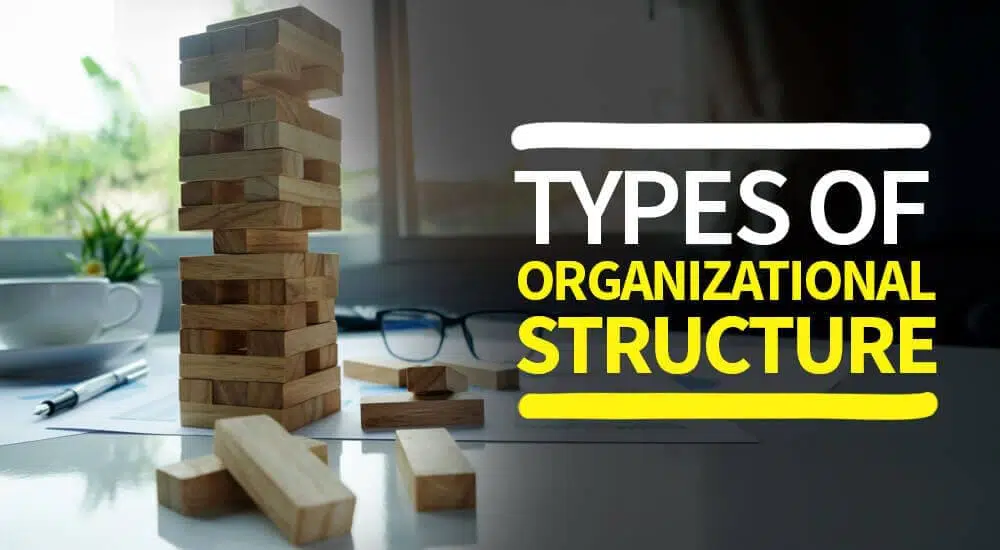Today, we will discuss the types of organizational structures.
Every company has an organizational structure built around its goals and business objectives. The structure should allow for temporary hires and seasonal employment if the work is short-term.
However, if the company relies on repeat business and regular tasks, the structure should support activities that help maintain its operations.
Organizational structure is a system that determines employee hierarchy, functions, and workflow and provides a transparent and fair reporting system. It is an enterprise environmental factor guiding how an organization runs its operations.
As organizations grow, their requirements change, and the structure must adapt to support its objectives.
You might wonder about the relative significance of the organizational structure.
The market is competitive; therefore, organizations must adapt to market demand and be responsive to shifting business objectives.
A well-defined organizational structure helps businesses realize their potential and support their objectives.
For example:
Let us say your company is producing a product. Your customers are satisfied and not demanding, so what organizational structure would you select?
The functional organizational structure serves this company best because it supports production operations.
Let’s consider another case.
Suppose your organization has ten employees and deals with small projects. As soon as you complete a project, you start looking for the next one.
In this case, what kind of structure would you select?
You would opt for the projectized organizational structure since your company mainly works with temporary projects.
Now, the final case.
Your organization is enormous. The work environment is dynamic and diverse. Customer requirements and market demands frequently change.
What kind of structure would you select?
The functional structure won’t work because it does not allow quick changes to its operations and isn’t as responsive to market nuances.
You also cannot select the projectized structure. Although it supports a dynamic nature, this isn’t adequate for a large organization. Your company is big, and you need permanent departments to keep your organization functioning smoothly.
This is not possible with the classic projectized structure.
Hence, you will select a matrix organizational structure. It combines the qualities of both functional and projectized organizational structures and will support your operations and help you achieve your business objectives.
Types of Organizational Structure
An organizational structure guides how activities in your company are carried out to achieve its goals. It determines how information flows within the organization and between departments. It defines the chain of command and job responsibilities.
The organizational structure depends on many factors, such as governing style, leadership style, workflow, hierarchy, etc.
The PMBOK Guide defines eight types of organizational structures:
- Organic or Simple Organization
- Functional or Centralized Organization
- Multi-divisional Organization
- Matrix Organization
- Project-oriented (Composite or Hybrid) Organization
- Virtual Organization (Network Structure)
- Hybrid Organization
- PMO (Project Management Office)
Wikipedia lists six additional types of organizational structures:
- Pre-bureaucratic Structure
- Bureaucratic Structure
- Post-bureaucratic Structure
- Functional Structure
- Divisional Structure
- Matrix Structure
Some other sources divide them into the following categories:
- Simple Organization
- Functional Organization
- Divisional Organization
- Matrix Organization
- Team-based Organization
- Network-based Organization
- Modular Organization
On the Internet, you will find many different types of organizational structures. However, the classifications above are the most popular.
Since this blog follows PMI’s guidelines, we will focus on the PMBOK Guide’s classifications and briefly explain the other organizational structures.
#1. Organic or Simple Organizational Structure
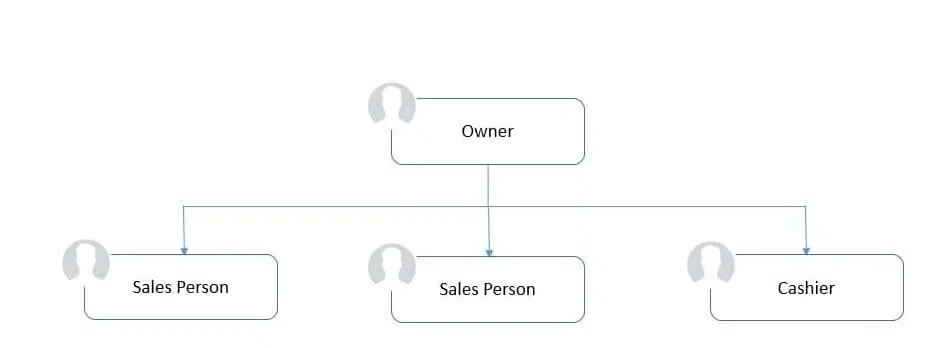
This is one of the simplest types of organizational structure. Here, you work alone or side by side with another employee.
You may be the only employee in your company.
Instances of this type are a solopreneur, OPC (One Person Company), or a freelancer.
#2. Functional (Centralized) Organizational Structure
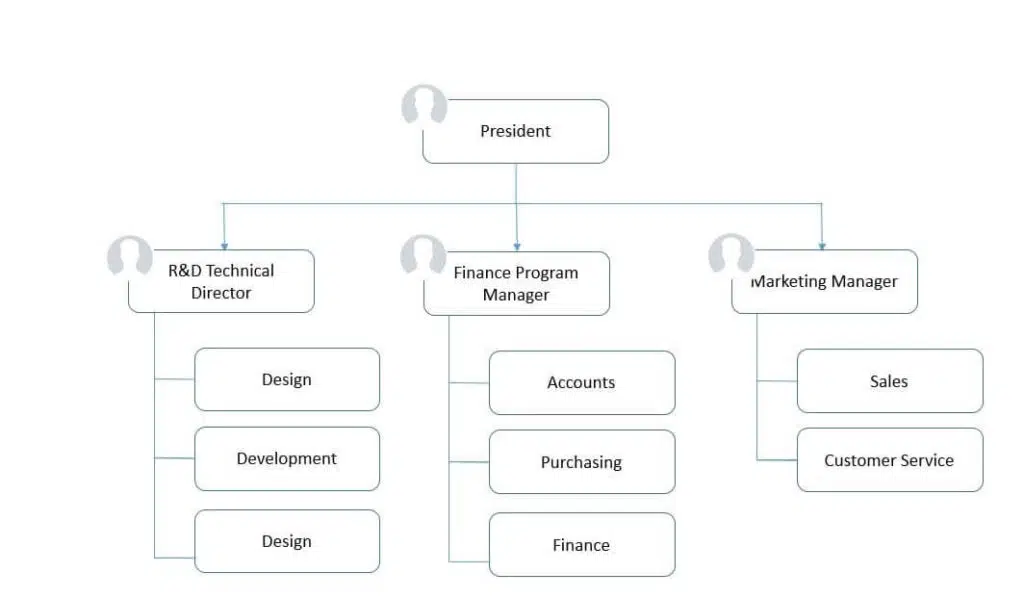
Functional organizational structure is the most commonly used organizational structure. Here, the organization comprises various departments; each department has workers with similar skills: sales, marketing, and finance, to name a few.
This helps organizations maximize the efficiency of each functional group.
#3. Multi-Divisional Organizational Structure
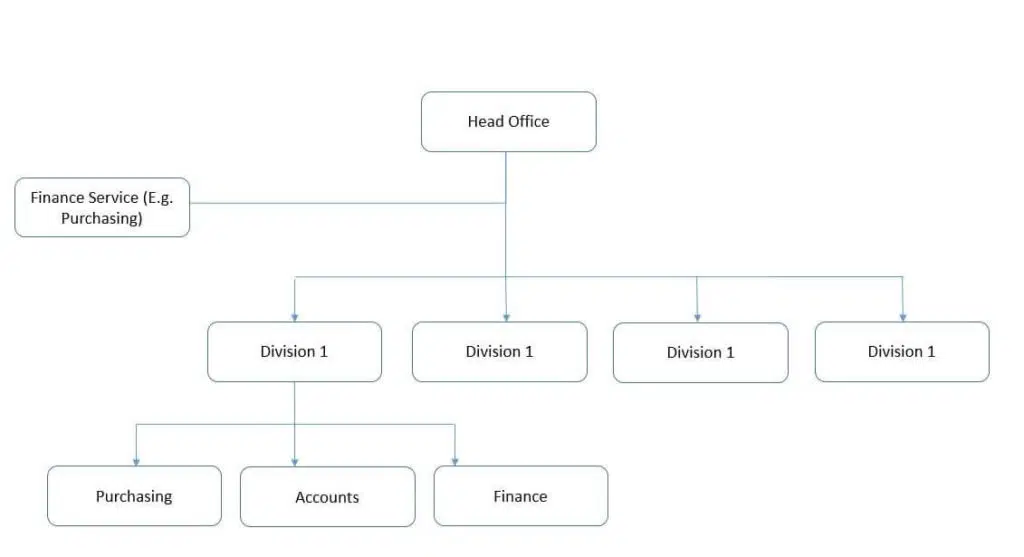
This organizational structure may have many functional divisions with little centralization. Generally, these divisions are independent. Although they will guide a part-time staff, project managers do not have much authority.
Under a multi-divisional structure, the organization is divided into various divisions. Employees with diverse skills are kept together in groups based on a similar product, service, or geographic location. Each division has the resources required to function and can work independently.
#4. Matrix Organizational Structure
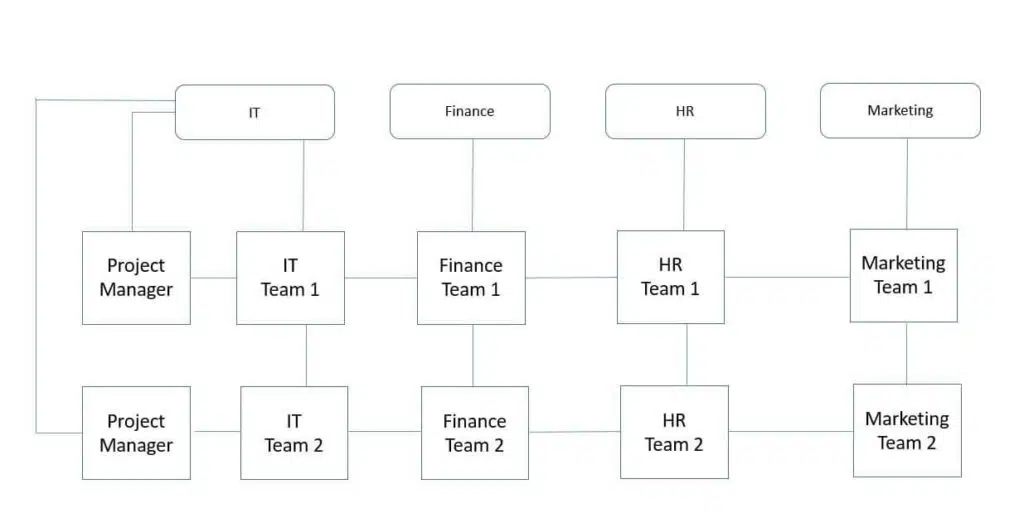
This is the most commonly used organizational structure. Matrix organizational structure is a hybrid of a functional and projectized organizational structure. Here you have two command structures: vertical and horizontal.
Employees may belong to a functional group and work on a project, so this structure combines the best of both worlds.
A matrix organizational structure can be of three types:
- Strong Matrix Structure
- Balanced Matrix Structure
- Weak Matrix Structure
Strong Matrix Structure
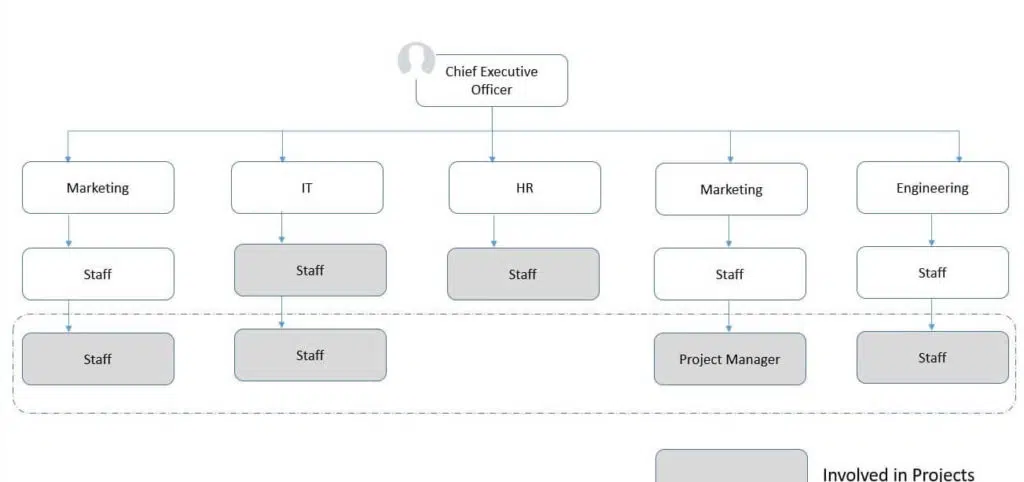
Strong matrix organizations are closer to a projectized organization. The project managers have the highest authority, control over the budget, and a full-time team reporting to them.
Balanced Matrix Structure
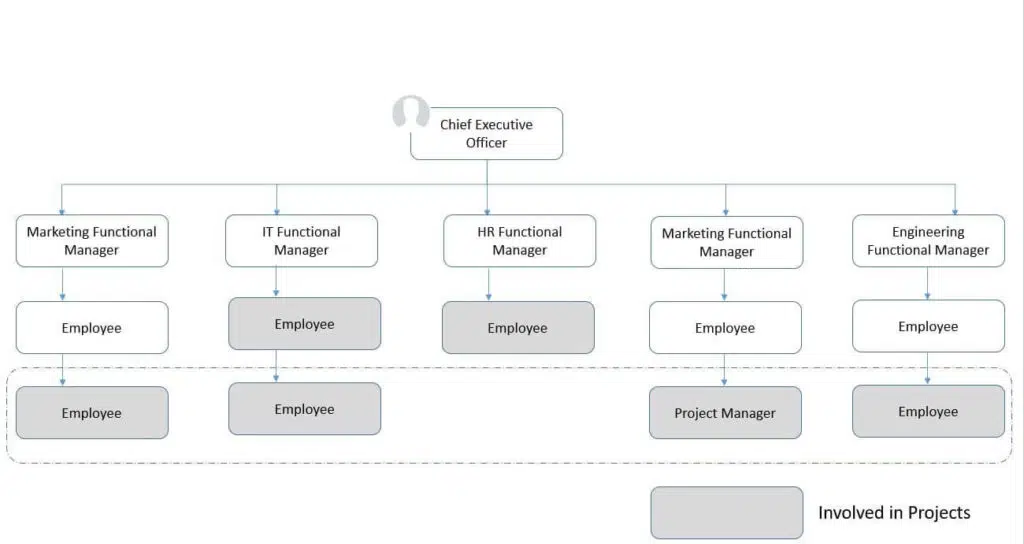
A balanced matrix has properties of both functional and projectized structures. Here, project managers have a low-to-moderate authority and a part-time team. Both the project manager and the functional manager manage the budget.
Weak Matrix Structure
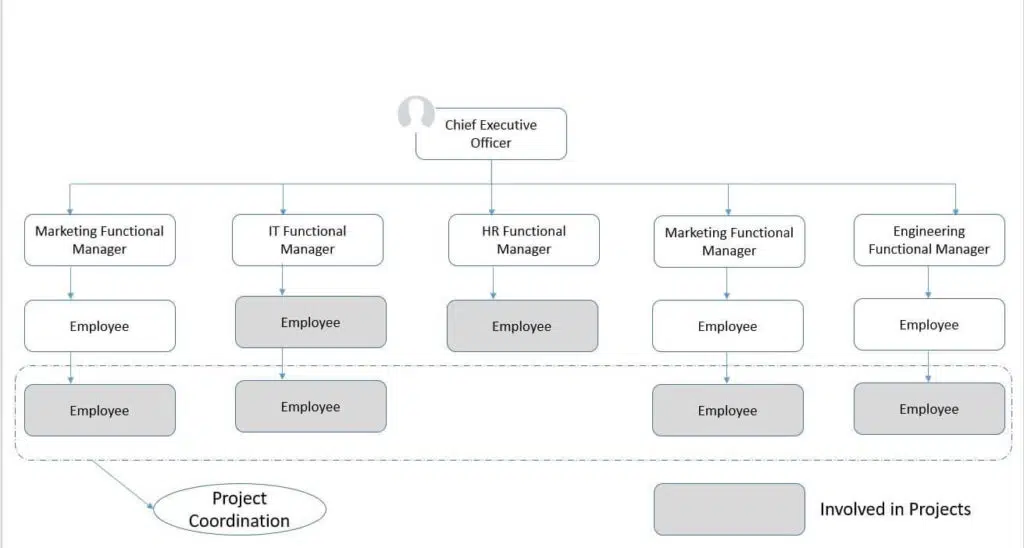
A weak matrix is closer to a functional structure. With a weak matrix, project managers have low authority and no control over the budget; they will have a part-time team.
#5. Project-Oriented (Composite or Hybrid) Organizational Structure
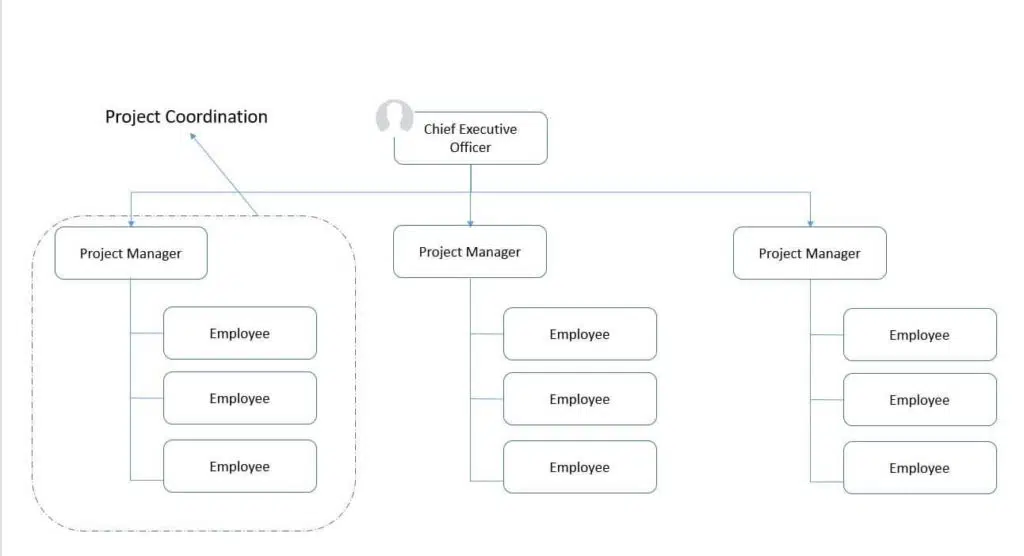
As its name suggests, projectized organizations deal with projects. Project managers have a full-time role and comprehensive authority to complete the project successfully. They control the budget and have a full-time team report to them.
A team-based structure is another name for a projectized organizational structure.
This type of organizational structure is seen in small-to-medium-sized organizations that only deal with projects.
#6. Virtual Organization or Network Structure
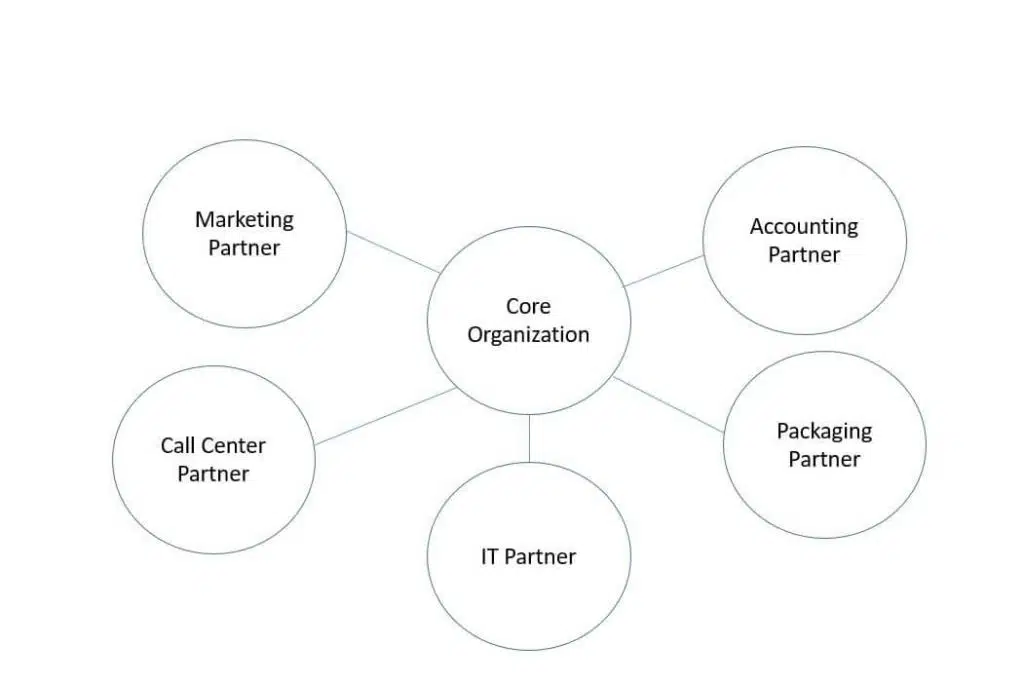
Many experts call this a virtual corporation. The central organization is connected to outside firms via the internet. The outside firm can be a vendor, client, or associate. This structure helps businesses achieve corporate growth and greater profit. The organization keeps its core business while adjunct processes are outsourced in a network structure.
This organization structure is also known as a hollow corporation, hollow organization, or network structure.
In a virtual organization, the project manager has a low-to-moderate authority and mixed control over the budget, and they may or may not have a full-time team reporting to them.
#7. Hybrid Organizational Structure
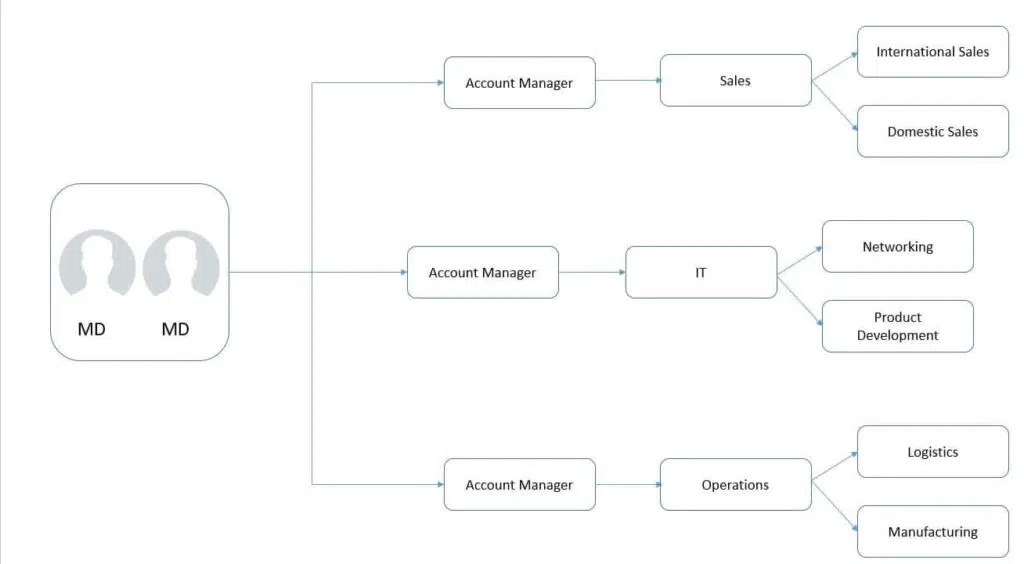
True to its name, this type of organizational structure may use any combination of the organizational structures.
Suppose yours is a functional organization whose typical needs are easily met by conventional departments in some cases. However, your organization will create a separate project team to complete unique tasks.
A hybrid organization is a mixed structure that serves organizations with diverse needs. Responsibility, authority, and other factors are also mixed depending on the structure.
#8. PMO (Project Management Office)
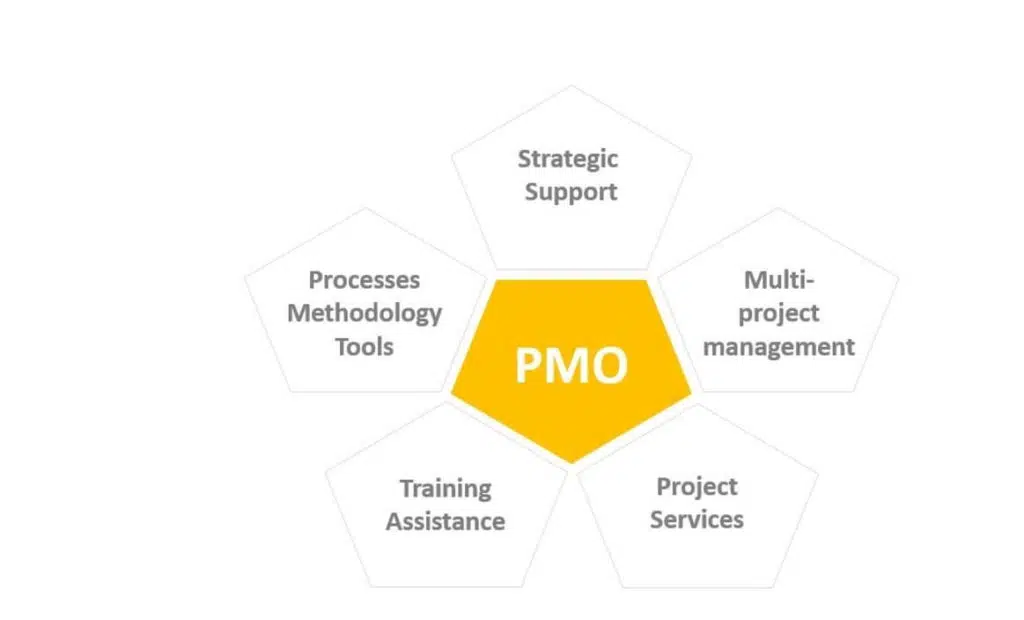
PMO is also a mixed organizational structure. Here, project managers have the highest authority. They control the budget and have a full team reporting to them.
This concludes the summary of organizational structures.
Next, we will discuss those organizational structures not mentioned in the PMBOK Guide. Note that I am describing these organizational structures for your information only. You will not see any questions about these types of structures in your PMP exam.
The Simple Structure
This organizational structure is suitable for small organizations in their early stages. They have just started and are still in the development phase. In this type of organizational structure, authority rests on a single person. These structures have few rules, and work is relatively straightforward.
Some scholars call this a pre-bureaucratic structure. In the organization chart for this type of organizational structure, you will find one person at the top, and all other employees are below it.
The Modular Structure
In this structure, the organization outsources some parts of a product.
Note that the company outsources the processes in the network structure, while in a modular structure outsources only a few parts of the product.
Pre-Bureaucratic Structure
Pre-bureaucratic organizations do not have standard procedures and policies. Small-scale and young companies use this structure. This organizational structure has a few employees who handle simple tasks. It has a central command with one decision-maker in the top position.
Communication takes place on a one-on-one basis, and it usually is informal.
Bureaucratic Structure
This organizational structure suits huge organizations with complex operations that need smooth administration. They have standard procedures and processes.
An example of this organizational structure is the food and beverage industry, with strict rules and regulations that govern processes.
Post-Bureaucratic Structure
Post-bureaucratic organizations are quite developed and have complex standards and procedures. These organizations have a central command comprising several board members; decisions are made through a democratic process.
This encourages employee participation, trust, responsibility, and respectful interpersonal relationships.
Key Elements of Organizational Structure
The followings are five key elements of an organizational structure:
- Job Description
- Division of Department
- Chain of Command
- Span of Control
- Formalization
Job Description
A job description defines the task managed by each employee of the organization.
It is the most important element of organizational structure as it distinguishes one role from another and separates and defines the responsibilities.
Division of Department
An organizational structure can have many departments, such as finance, human resources, and quality control.
Each department has a unique set of activities and a department head. Sometimes, departments are known as sections and are led by the section head.
Chain of Command
This shows the line of command from top to bottom.
For example, quality control supervisors report to quality control engineers, and quality control engineers report to the quality control head.
However, the heads of quality control and human resources are equal and report to the organization’s CEO.
Span of Control
This shows how many departments the organization has. Moreover, it defines how many employees a manager or department head can control.
The span of control determines the chain of command and shapes the organizational structure.
Formalization
Formalization defines how employees should behave and communicate through the chain of command.
Formalization standardizes the workflow in organizations.
The Impact of Growth on Organizational Structure
The structure of an organization cannot be fixed, especially when the business is growing.
When the company is small or starting up, it will have a simple structure.
As it grows bigger but still handles a single project at a time, it can function well with a purely projectized organization.
If the company is creating products and growing, it may shift to a functional organizational structure.
But as the business grows, it cannot rely on a pure project or functional structure. It will require elements of both structures to support its needs. The business can have a strong or weak matrix structure in such cases.
As the company expands, it will need a hybrid structure to support its business objectives.
The Advantages of an Organizational Structure
An organizational structure has a well-defined reporting structure, reducing employee friction by clarifying roles and responsibilities.
Having a proper organizational structure can bring immense benefits to any organization. A well-chosen structure:
- Allows an organization to grow.
- Focuses on your strategic goals instead of each department focusing on its agenda.
- Unites a group of people and points them toward a common goal.
- Encourages employees to enhance their skills.
- Makes the decision-making process efficient, smoother, and faster.
- Facilitates the specialization of employees.
- Empowers better control and use of resources.
- Establishes a proper reporting system.
- Enables easier and effective communication, which helps reduce conflicts.
- Allows employees to perform better.
- Equips employees to grow their careers and streamlines new employee onboarding.
- Identifies clear roles and responsibilities.
Centralized Vs Decentralized Organizational Structure
While designing the organization, you must decide if you want to use a centralized or decentralized organizational structure.
In a centralized structure, the top management makes decisions and distributes them through a chain of command.
This structure provides greater control, but making decisions is time-consuming. Supervisors must raise a request for every decision. Then, management reviews the request and decides.
In a decentralized structure, supervisors can make important decisions and inform the management. It provides autonomy to employees, makes decision-making faster, and motivates employees.
Can An Organization Change its Structure?
The business environment is dynamic and constantly evolves, so an organization can change its structure to adapt to realities. They will change if the old organizational structure is inefficient or hinders business growth.
For example, an organization can be purely projectized when starting; however, when they grow, they need a stable structure that supports permanent employees and functional departments. Then they can go for a matrix structure.
Conclusion
An organizational structure is a framework that helps organizations achieve their business objectives. It defines the relationship between the various departments and teams and helps organizations delegate authority, power, and responsibility.
An organizational structure gives employees a transparent reporting system helping to avoid conflicts and supporting good communication. An organizational structure is essential for smooth functioning, so companies should choose a structure suitable to their needs and requirements. A misaligned structure will hinder growth.
What type of organizational structure does your organization have? Please share your experiences at work in the comments section.

I am Mohammad Fahad Usmani, B.E. PMP, PMI-RMP. I have been blogging on project management topics since 2011. To date, thousands of professionals have passed the PMP exam using my resources.

